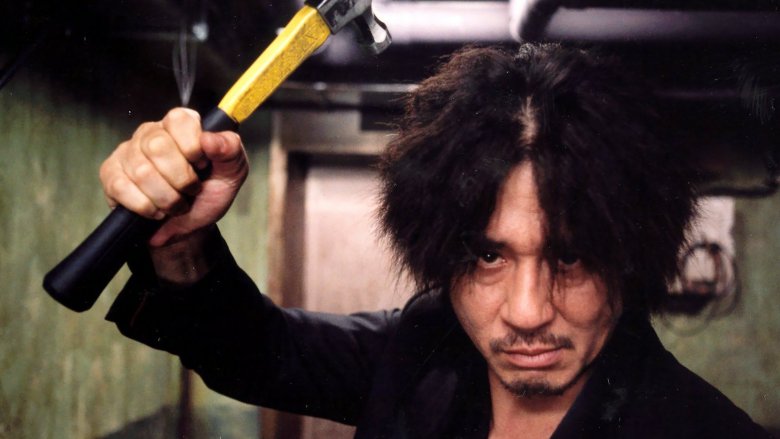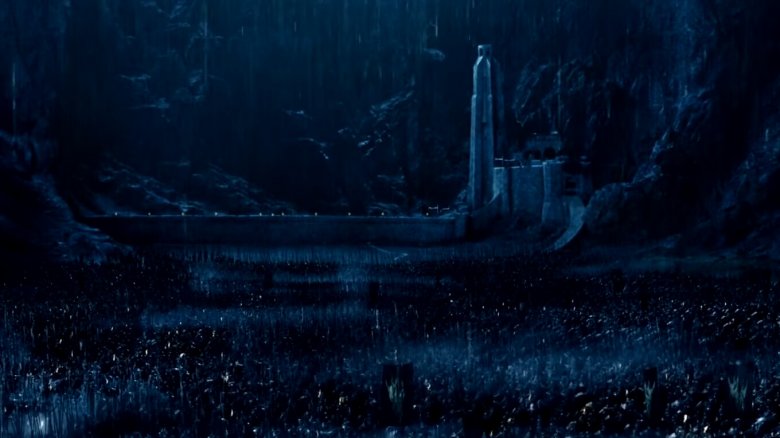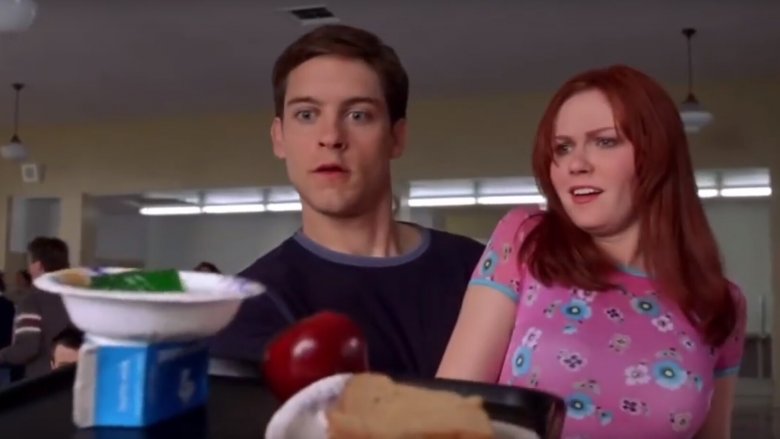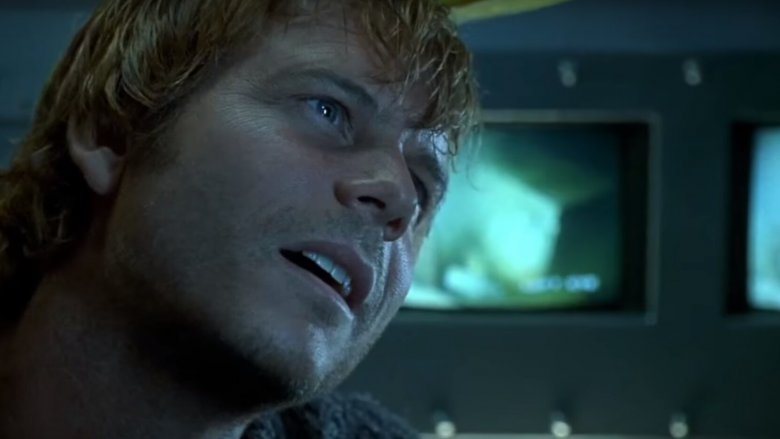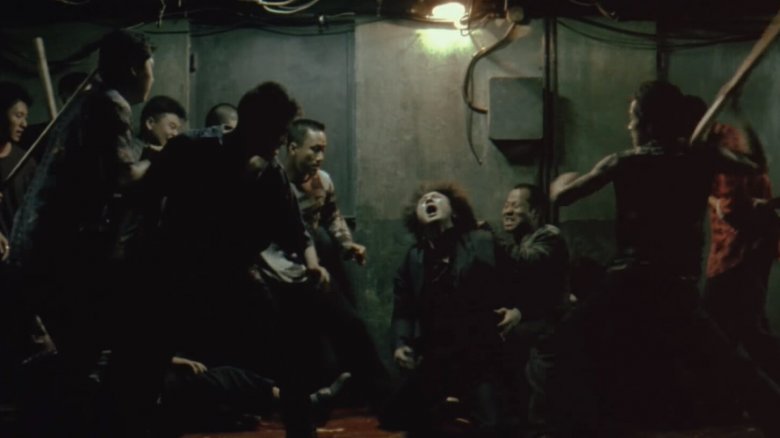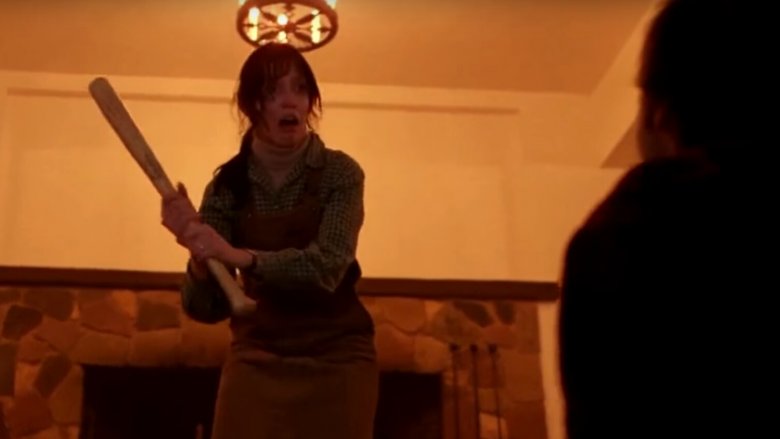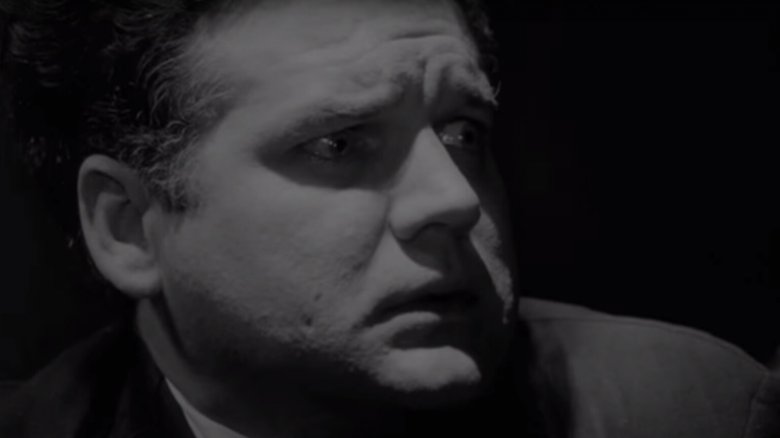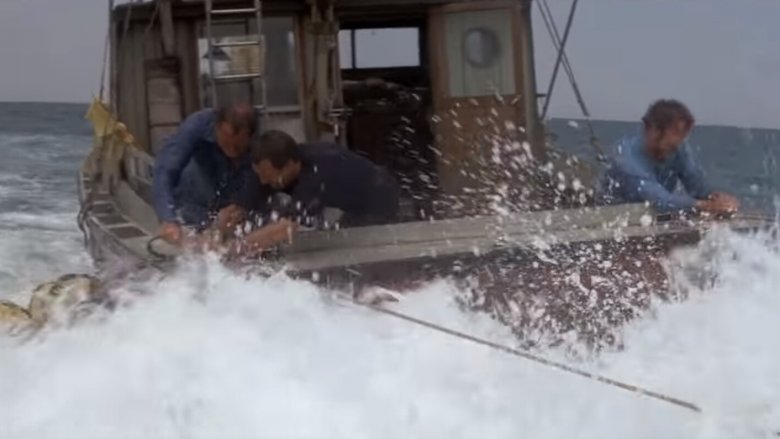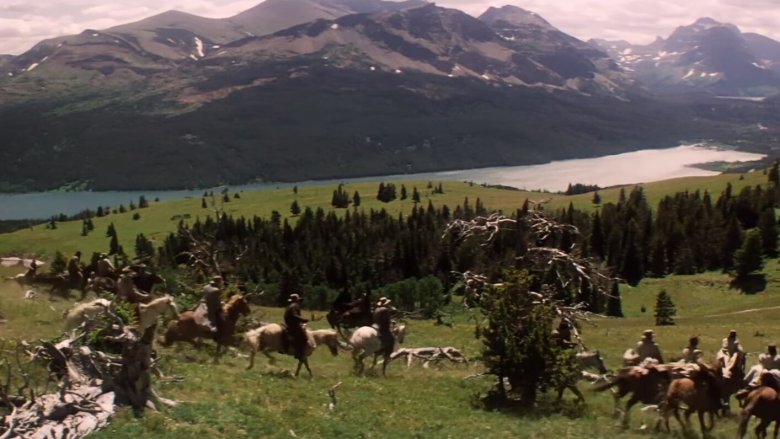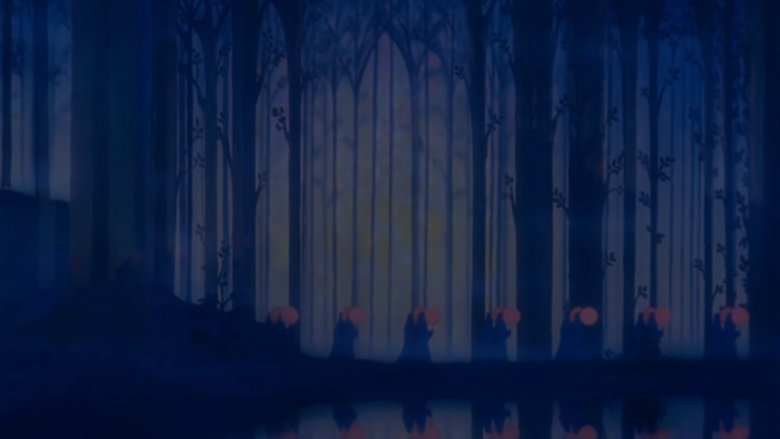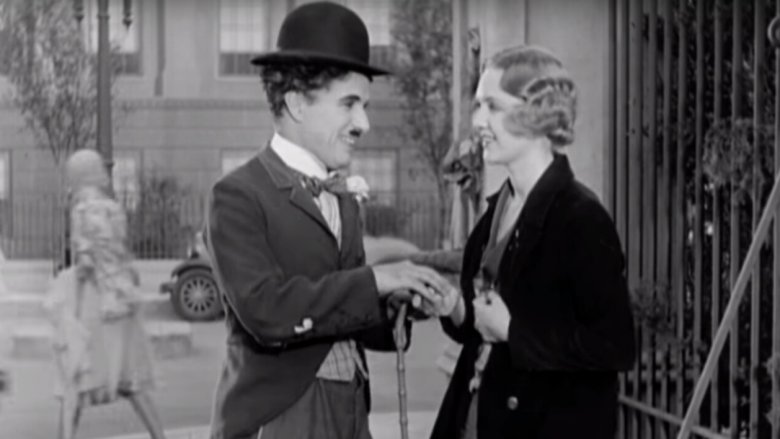Movie Scenes That Took Forever To Film
It takes a long time to make a movie. Even the rare production that stays on schedule will invariably have a scene or two that becomes its own massive undertaking. A centerpiece action sequence might eat up huge swaths of shooting. Sometimes, a demanding auteur director will order take after take in search of perfection. Unforeseen accidents can even derail what should have been simple scenes.
With the wide variety of things that can go wrong, movie history is filled with scenes that casts and crews will never forget. Often, audiences find them unforgettable as well, making the herculean effort all worth it. Sometimes, though, the results are disastrous or, perhaps even worse, go completely unnoticed, ending epic tales of artistic endeavor with a tragic twist. But more often than not, the stories behind the stories remain endlessly fascinating.
We've collected the best of these stories about the making of scenes that, for better or worse, took forever to film.
Deep in Helm's Deep
The making of Peter Jackson's Lord of the Rings trilogy was an adventure as epic as the story it told. Bringing J.R.R. Tolkien's sprawling fantasy world to the screen required a massive army of artists, builders, and actors to transform New Zealand into Middle Earth. Principal photography alone took over a year, with pick-up shooting and postproduction adding a further three years to the final tally. The undertaking was so complex that over twenty hours of documentary footage would eventually reveal the process on the trilogy's DVD releases.
There's no shortage of scenes that took forever. Each film in the trilogy has at least one standout, like Fellowship of the Ring's Council of Elrond sequence, in which over a dozen characters deliver complex plot exposition. The final chapter, Return of the King, features an emotional farewell that had to be shot over three separate days because of camera and costuming errors.
The trilogy's centerpiece action scene of the trilogy, though, is probably The Two Towers' climactic Battle of Helm's Deep. A 2017 piece at Relevant recounts the ways in which the enormity of this production has yet to be topped in the last 15 years of action blockbusters. Shot over three months, mostly at night, with torrential downpours both real and simulated, the sweeping conflict takes up 40 minutes of screentime. But what makes it really resonate is Jackson's ability to keep the focus on the emotional arcs of the story's heroes.
Spidey Sense is real
Before there was the Marvel Cinematic Universe, Peter Parker swung onto screens in director Sam Raimi's 2002 blockbuster Spider-Man. It was the early rumblings of the superhero movie renaissance, following hot on the heels of X-Men and setting the stage for Batman Begins. Hollywood was trying to figure out what comic book movie audiences wanted, resulting in a mix of big hits and disastrous misses.
Similarly in flux was the state of special effects. Though the "digital revolution" rolled out through the '90s, CGI was still undergoing the occasional growing pains at the turn of the millennium. Many of Spidey's stunts would be achieved digitally, but they don't exactly hold up when compared to what the webhead gets up to in Avengers: Infinity War.
Raimi, who has often spun his fascination with sleight-of-hand magic into low-budget camera tricks, was determined to achieve Peter Parker's "Spidey Sense" for real. For the scene in which his newly enhanced agility allows Peter (Tobey Maguire) to rescue Mary Jane Watson (Kirsten Dunst) from a slip and catch her entire airborne lunch neatly on a tray, no computer assistance was used. Maguire managed the trick with himself with some adhesive and props dropped strategically from above. Of course, that doesn't mean it wasn't difficult — the shot took 156 takes over a 16-hour shooting day.
James Cameron's true abyss
The true story of the R.M.S. Titanic is often seen as a warning about mankind's hubris. The ostentatious vessel, built to break records and demonstrate English superiority while catering to the wealthiest people, was unprepared for the disaster that ensued when it struck an iceberg. The belief in the ship's invincibility led to over 1,500 of its 2,224 passengers perishing at sea.
During production, James Cameron's 1997 film Titanic seemed destined to fall victim to ambition as well. Cameron intended to set an original love story against the backdrop of a painstaking recreation of the original ship and its sinking. Elaborate sets, difficult conditions, and Cameron's exacting perfectionism saddled the project with a constantly bloating budget and a schedule that spiraled out of control as the release date slid from July to December. A highly unusual partnership between 20th Century Fox and Paramount Pictures was required to keep Titanic afloat, as it became the most expensive movie ever made at the time.
The risks paid off, as the film became a massive success, hailed for its grandeur and spectacle. The intricate ship sets and harrowing sinking scenes may have provided Titanic's most dazzling moments, but the most difficult scenes to shoot involved no effects or recreations at all. Cameron embarked on a dozen expeditions to the real shipwreck, more than two miles below the ocean's surface, over the course of two years. On these lengthy and often dangerous dives, the filmmaker not only researched the vessel, but shot extensive footage of its present state for use in the movie's opening scenes.
Hallway hustle
Marvel's Netflix shows have boosted the studio's already massive popularity in recent years by offering gritty, hard-hitting action to counter the slick production of their big-screen Cinematic Universe. Fans were particularly excited by a stunning sequence in the first season of Daredevil, in which Matt Murdock fights off a hoard of attackers in a hallway during a sustained three-minute shot. But Daredevil owes a debt to an older movie about an older boy.
The scene is an homage to a sequence in Oldboy, a 2003 South Korean film by legendary filmmaker Chan-wook Park. This revenge drama became instantly iconic with action fans worldwide, largely because of a fight between its protagonist, businessman Dae-su Oh (Min-sik Choi), and a gang of 25 violent henchmen. Far from being a superpowered fighting machine, the hero struggles through a viscerally painful battle, taking blow after blow while fending off foes with a claw hammer.
The whole ordeal is executed in a single, unblinking take, Park's camera gliding down the corridor in time with Dae-su Oh's progression. No editing or visual effects enhance the scene, save for a single computer-generated knife. This uncut reality is not only what makes the scene so memorable, it's also what made it take forever to shoot, requiring 17 takes over three days to get everything just right.
Batting a thousand (almost)
Many of the most famous and accomplished filmmakers earned their reputations by being unrelenting perfectionists. There may be no director more iconic for extreme demands than Stanley Kubrick, who brought extensive research and exacting preparation to a variety of genres. The most famous example of his methodical process is probably his 1980 horror masterpiece The Shining.
Kubrick's adaptation of Stephen King's novel was in production for over a year, its shooting schedule stretching beyond expectation as the director constantly reworked the script and shot take after take in search of the perfect mood. A fire further delayed the film, and rather than compromise the film's content, Kubrick used it as a chance to write even more. The Shining's setbacks even affected the neighboring production of The Empire Strikes Back.
One scene in particular took so long that it landed The Shining in the Guinness Book of World Records for highest number of takes for a scene with spoken dialogue. Kubrick shot 127 attempts at a sequence in which Wendy Torrance (Shelley Duvall) faces off against her increasingly deranged husband, Jack (Jack Nicholson) with a baseball bat. "Stanley pushed me and prodded me further than I've ever been before," Duvall would recall later. "It's the most difficult role I've ever had to play."
David Lynch's one-year door
To imbue the set of The Shining with the specific sense of perplexing dread he hoped to achieve, Stanley Kubrick showed the cast and crew David Lynch's debut feature, Eraserhead. The film had just premiered a couple years earlier after a long and laborious production process of its own. Lynch made Eraserhead while studying at the American Film Institute, accepting a grant for the project and converting the Institute's unused stables into sets.
Lynch ended up living in Eraserhead's primary apartment set as shooting stretched on for years. When the grant from the AFI ran out, he and his small cast and crew continued to pour their own money into the production. Acquiring personal loans and taking a newspaper delivery job, Lynch shot pieces of Eraserhead whenever enough time and money could be scraped together.
This haphazard schedule meant that some scenes would be started without any certainty about when they could be finished. Lynch would later reveal in the documentary Eraserhead Stories that the longest-delayed scene was actually one of the film's simplest: Henry Spencer (Jack Nance) opening his apartment door and stepping into the hallway. Between the shot of Nance opening the door and the shot of him stepping through it, an entire year had passed.
Spielberg sinking
Not only did Steven Spielberg's Jaws define the modern summer blockbuster, it demonstrated how to create tension by withholding the reveal of what the audience is afraid of. This wasn't entirely intentional, as the mechanical shark's frequent breakdowns forced Spielberg to show the beast much less than he originally planned. The young director was forced to develop clever ways to suggest the maneater's presence without the use of the troubled robot.
One of these quick fixes ironically led to the most disastrous day of an already beleaguered production. The heroic fishermen harpoon the shark with a series of floating barrels that signal its presence beneath the surface. For a scene in which the ominous floaters circle the boat known as the Orca, the film's effects technicians affixed a pulley system that controlled their movement to the bottom of the hull.
Unfortunately, the planks of the Orca weren't strong enough to support this rig, and a quick yank on the barrel's ropes tore a hole in the boat's hull. It began to sink rapidly, sending the crew scrambling to rescue the cast, equipment, and an entire day's footage from the sea. Although this and several other disasters pushed the shooting schedule from the planed 55 days to a whopping final tally of 159 days, the Orca was repaired, the footage was saved, and Jaws went on to reshape movie history.
The hellish Heaven's Gate
Director Michael Cimino's 1978 drama The Deer Hunter was met with critical praise, box office success, and an Academy Awards sweep. This success granted Cimino the clout to do just about whatever he wanted as a follow-up, and what he chose was Heaven's Gate, an epic dramatization of the Wyoming land conflict known as the Johnson County War. Nearly quadrupling its original budget, running far behind schedule, and clocking in at nearly four hours long, Heaven's Gate was an enormous gamble...and it didn't pay off.
Cimino's perfectionism became legendary, with entire books and documentaries chronicling the sometimes surreal shooting of Heaven's Gate. As summarized in a Den of Geek rundown, reasons for its bloated production range from horseback riding and roller skating lessons to a city street set being torn down and rebuilt to increase the gap between houses by six feet. But the single most arduous scene was the film's enormous battle set piece.
The location Cimino selected was a field more than three hours' drive away from the rest of the production. Cast and crew had to be shuttled out each day for a month. A special irrigation system was installed specifically for the film to ensure that the grass was vibrant enough. Cimino would even halt filming to wait for the ideal cloud formations to roll in. The resulting footage looked beautiful, but that didn't stop Heaven's Gate from losing millions of dollars and getting torn to shreds by critics. Only decades later would the film be reappraised as a flawed classic.
Disney's near-disaster
Animation is an entirely different process from live-action filmmaking, and everything takes longer. Whether hand-drawn, stop-motion, or computer generated, the task of giving life to inanimate objects never comes quickly. The technical challenges presented in the early years of the medium were especially daunting, as meticulous frame-by-frame renderings and camera movements had to be calculated and carried out manually, with no guarantee of quality until a shot was finished.
Fantasia, the third animated feature from Walt Disney Studios, is a marvel on every level, particularly in the context of its 1940 production. It may have been underappreciated at the time, but the achievement of Fantasia's marriage of technical innovation with artistic ambition is hard to deny. For the grand finale of their "concert feature," Disney and his artists envisioned a climactic clash between the sacred and profane, pairing Modest Mussorgsky's "Night on Bald Mountain" with Franz Schubert's "Ave Maria." For the film's 75th anniversary, Classical MPR chronicled the struggle to capture this juxtaposition.
The visuals for "Ave Maria" called for the longest single shot in the history of animation at the time, as the camera followed a procession through a densely layered forest and into a cathedral of trees. This meant that a line-up of background paintings had to be set up end-to-end across the length of a huge soundstage. The scene was completed once, only to have the horrified crew realize they had put the wrong lens on the camera. A second attempt was foiled by an earthquake. All the while, the scene was frequently halted so that the soundstage could be used for Walt's weekly badminton game. The final shot was at last achieved in time for the film reels to be flown to New York mere hours before Fantasia's premiere.
A silent struggle
One might be tempted to assume that filmmaking was simpler in the silent era. With sound not being a factor and audiences marveling at even the simplest cinematic presentations, it must have been easy to make a movie, right? Not necessarily. For as long as there have been movies, there have been perfectionist directors, and one of the earliest was Charlie Chaplin.
Chaplin was a true auteur, being not only a star performer, but director, writer, producer, and composer for his feature films. While many silent stars have faded as their work nears a century old, Chaplin remains iconic, in part because of his tireless pursuit of his fully-formed vision. But one particular scene, according to Chaplin historian Hooman Mehran, was "extraordinary even by his standards."
Thinking that 1931's City Lights might be his final silent production (that would actually be Modern Times, five years later), Chaplin was more determined than ever to make a masterpiece. For a scene in which a blind flower girl (Virginia Cherrill) meets Chaplin's character and mistakes him for a millionaire, he demanded 342 takes. "Chaplin rehearsed on film," Mehran explained, "and since he was the director, he couldn't see his performance so he had to record it." Not an easy task in the days before video monitors.
